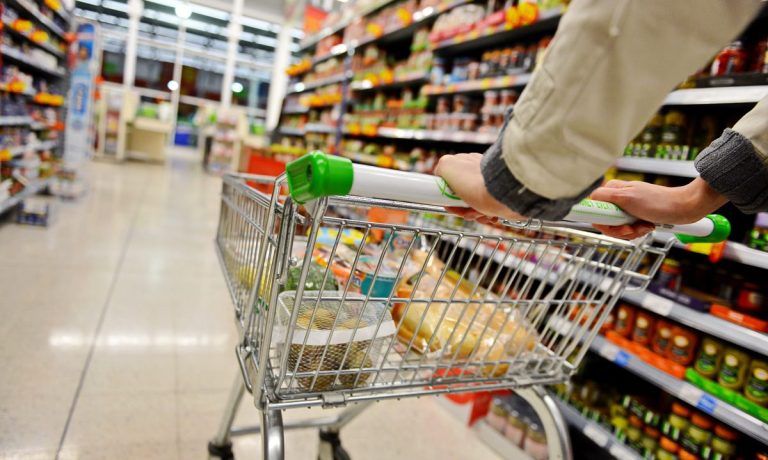
As inflation drives food prices up, grocers that shift the cost too quickly to consumers risk losing their most loosely held customers to competitors, reveal data from PYMNTS’ study “Decoding Customer Affinity: The Customer Loyalty to Merchants Survey 2022.”
The report, created in collaboration with Toshiba Global Commerce Solutions, featured the results of a census-balanced survey of more than 2,000 U.S. consumers in late fall 2021. It showed that more than a third (35%) of grocery and pharmacy shoppers said access to better digital capabilities could make them switch merchants.
Get the report: The Customer Loyalty To Merchants Survey 2022
The consumers who are most willing to switch are overwhelmingly those who are concerned about their finances. Forty-six percent of grocery shoppers who are living paycheck to paycheck and having issues paying bills said they would be willing to switch. This trend makes sense, given that some digital features, such as loyalty programs, offer deals and discounts, while others, such as curbside pickup, offer much-needed time savings to those who may be working multiple jobs and/or taking care of their families.
In fact, price is the single most influential factor in consumers’ decisions about which grocery store to purchase from, with 37% of consumers citing it as their top concern, well ahead of second-most-important factor proximity, which is the top priority for 32%.
Here, large grocers have significant power over smaller chains and independents able to wait them out on price increases. Walmart is far and away the most-frequented grocer, with three times more consumers having made grocery purchases from Walmart in the previous 30 days than next runner-up Kroger, and core to Walmart’s grocery strategy is its ability to price out competitors.
“Our unit growth in grocery is growing faster than dollars, and that’s our position we’d like to stay in as long as we possibly can,” John Furner, president and CEO of Walmart U.S., told analysts on a call in November. “We want to keep prices low for customers all across the business, and we’ll be the last to go up.”
Read more: Walmart Leverages Scale in Grocery to Price Out Competitors
The Decoding Consumer Affinity study found that 77% of grocery shoppers reported that low prices would improve their loyalty to their grocery stores. So, a brand that could have third place in a given shopper’s store rotation — 48% of in-store customers shop at three or more stores — can price its way to the No. 2 or No. 1 spot.
Even brands that cannot afford to lower the sticker price can still leverage consumers’ price concerns to build loyalty by surfacing the right messages and offers. Fifty-two percent of grocery shoppers reported that promotions and discounts would improve their loyalty to their grocer, and 42% said the same of loyalty programs with “rewards I like.”
“Loyalty programs can create the sense of recognition and engagement no different than if you walk in one of our stores where you’ve been shopping for 20 years, and we say, ‘Hey, Mrs. Jones, how are you?’” John Ross, president and CEO of the Independent Grocers Alliance (IGA), told PYMNTS in a PYMNTS TV interview in December. “Digital technology does allow you to replicate a lot of the effects of high-quality of service.”
See more: Supermarkets Rethink Physical and Digital Aisles for Grocery’s Connected Future